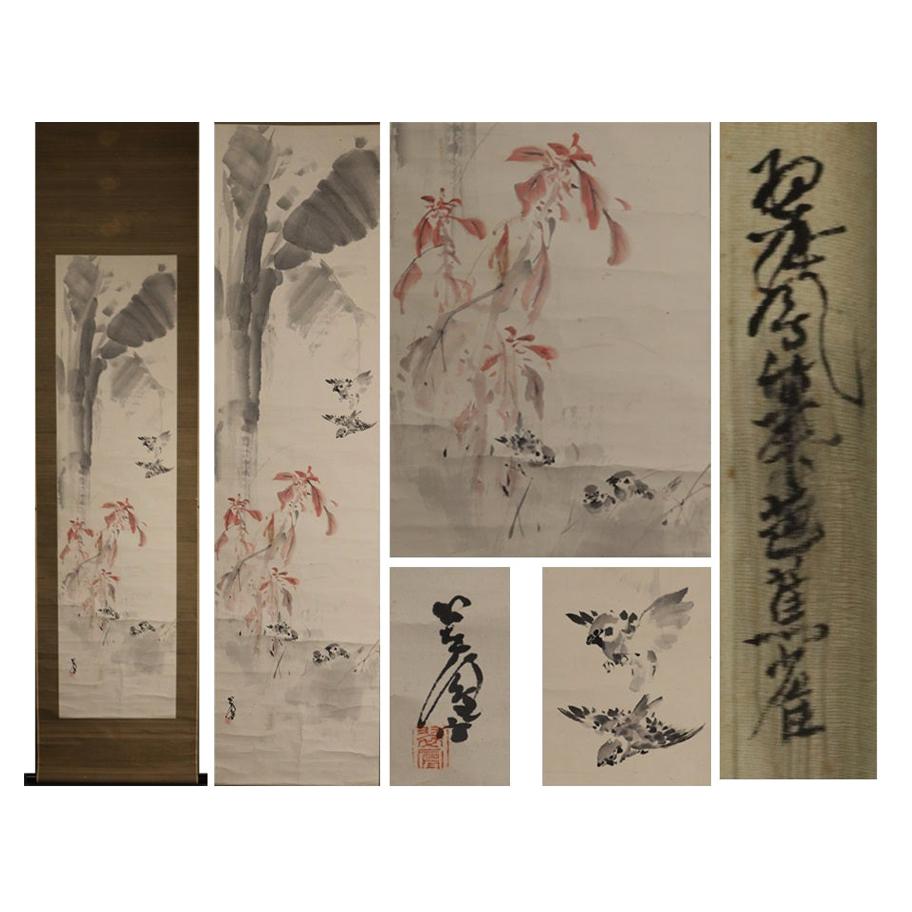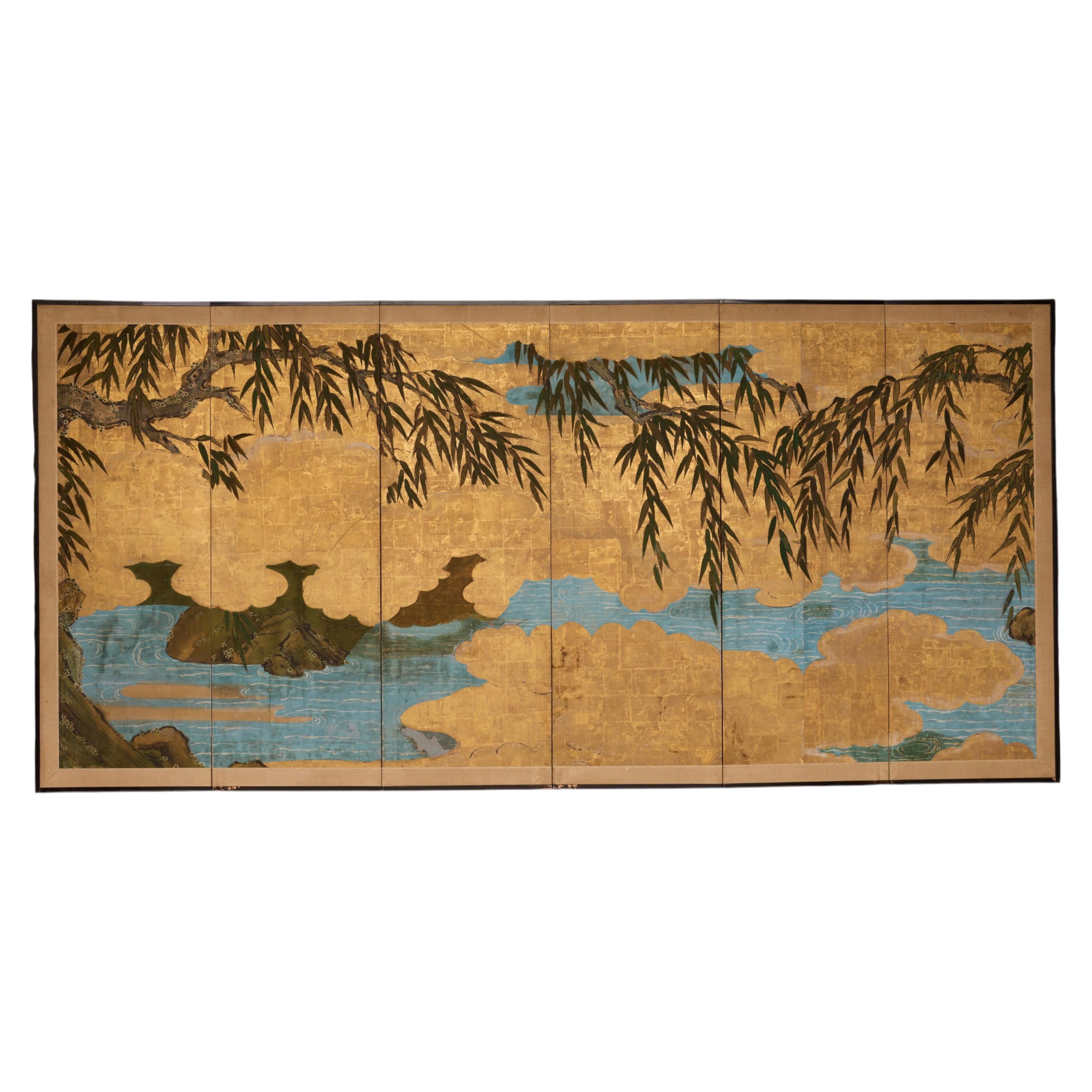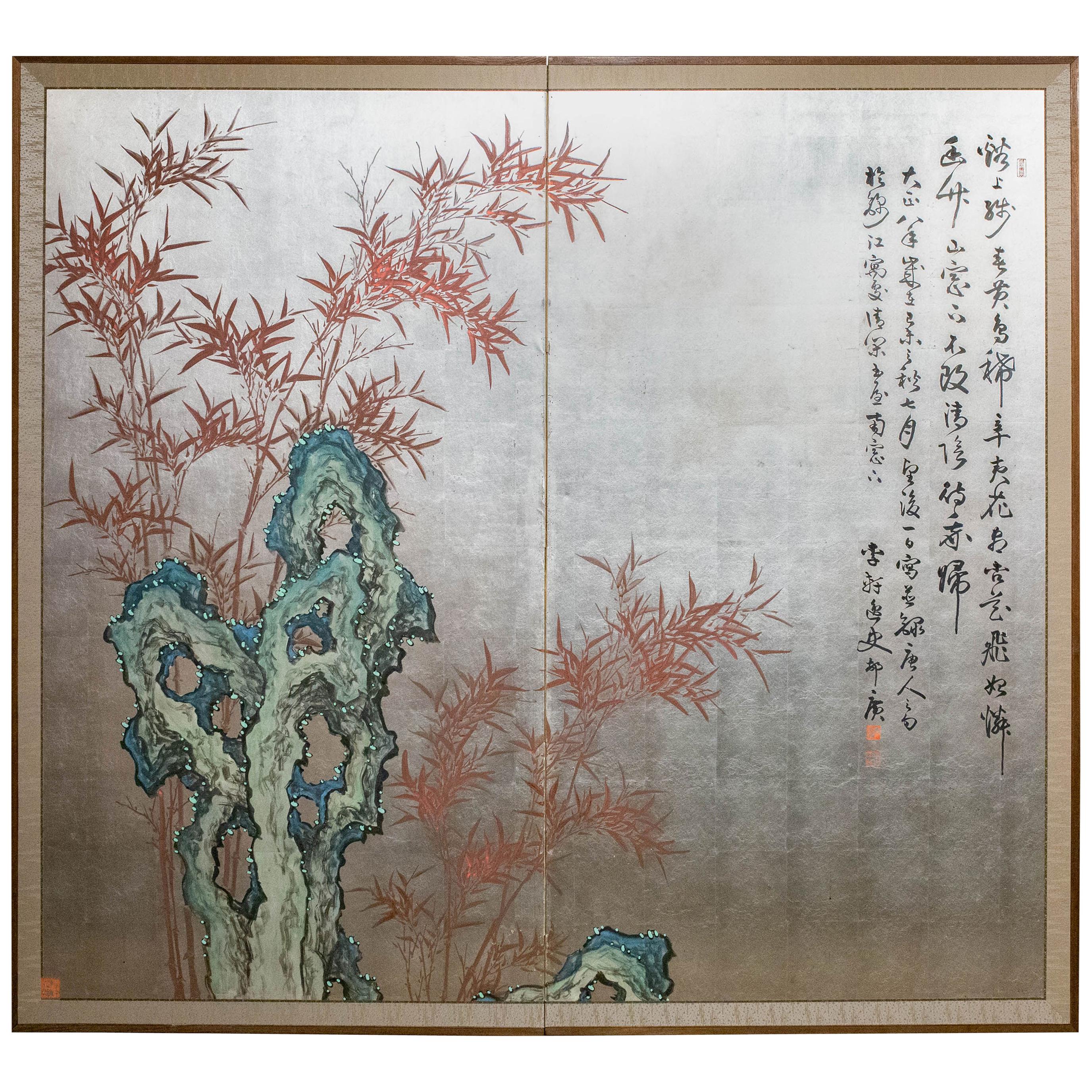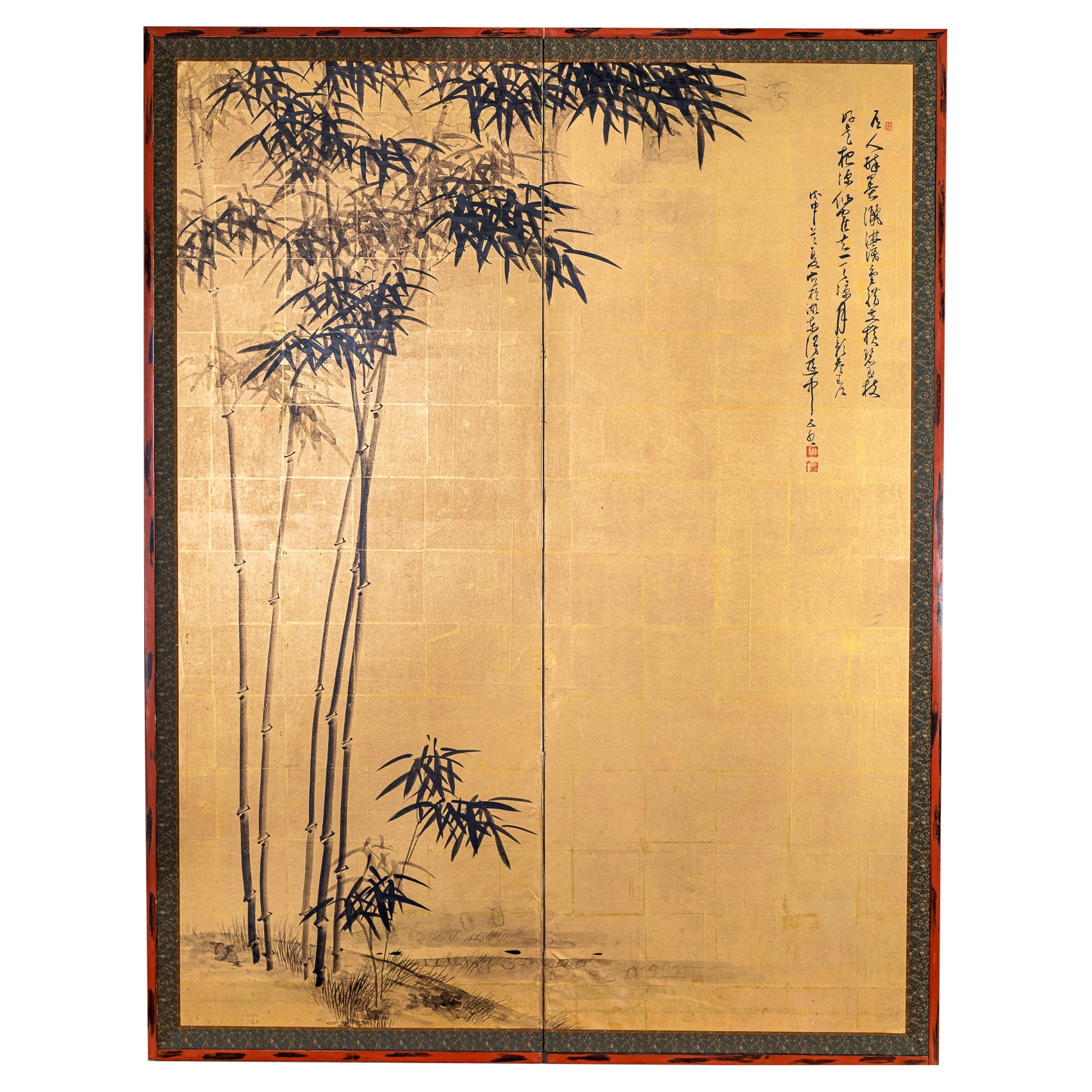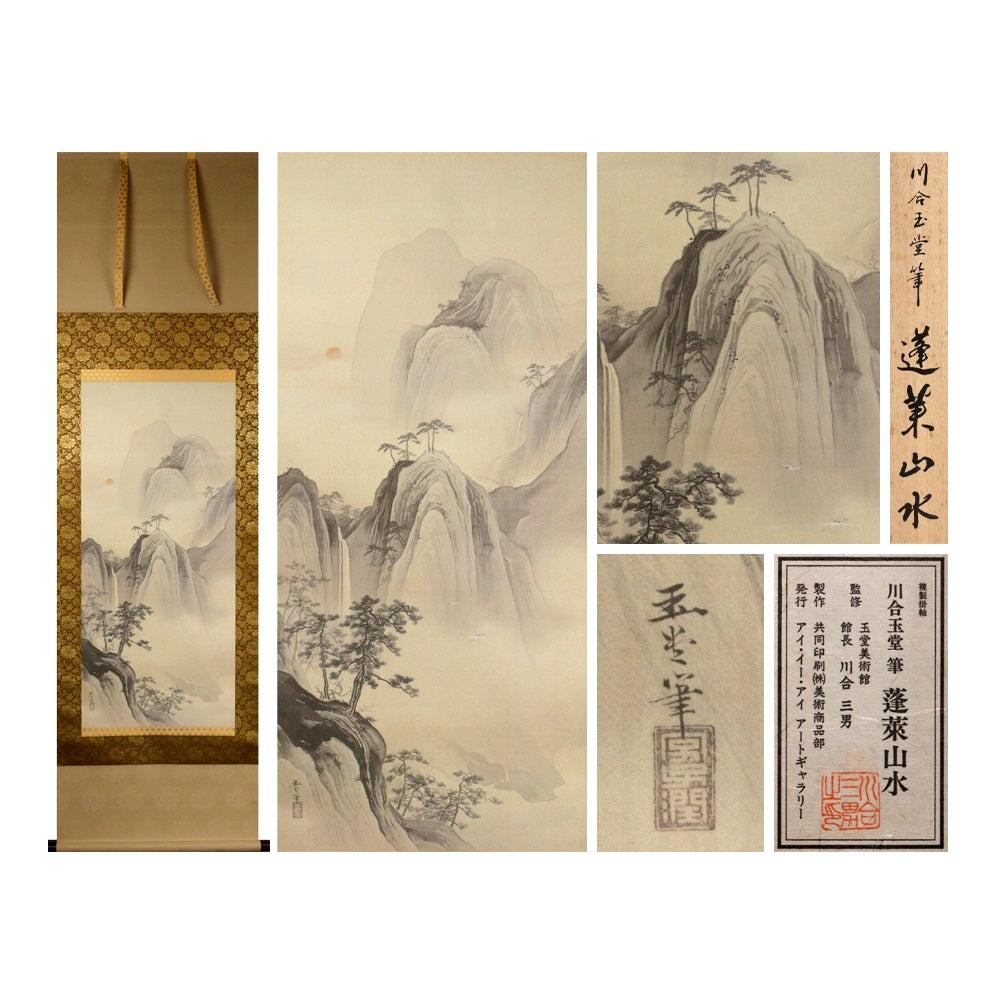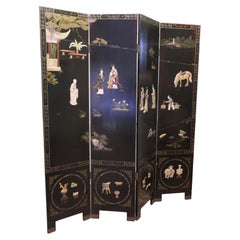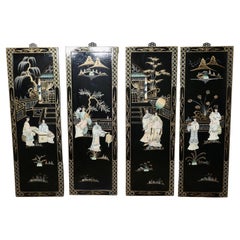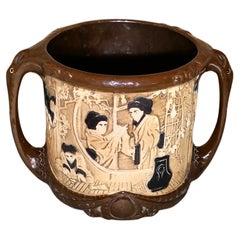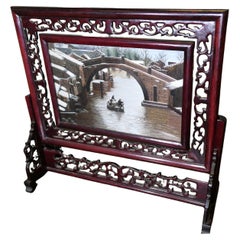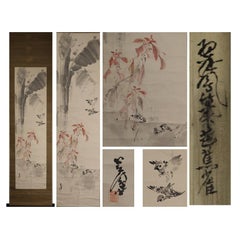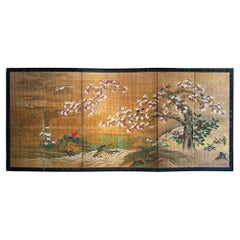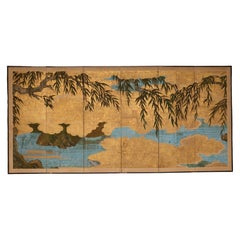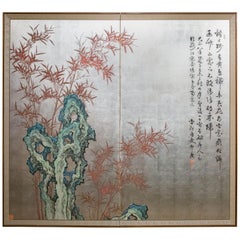Items Similar to Vintage Bamboo Japanese Art, Wall Art 5 excellent pieces
Want more images or videos?
Request additional images or videos from the seller
1 of 8
Vintage Bamboo Japanese Art, Wall Art 5 excellent pieces
$608.61per set
£450per set
€532.77per set
CA$841.45per set
A$942.57per set
CHF 495.07per set
MX$11,461.30per set
NOK 6,269.20per set
SEK 5,951.15per set
DKK 3,976.26per set
About the Item
Vintage Bamboo Japanese Art, Wall Art
5 excellent pieces, on cartridge paper set on Black Silk
Wonderful Vintage pieces, from 1980, 21.5” high, 15.5” wide
ZX281
- Dimensions:Height: 21.5 in (54.61 cm)Width: 15.5 in (39.37 cm)Depth: 1 in (2.54 cm)
- Sold As:Set of 5
- Style:Japonisme (Of the Period)
- Materials and Techniques:
- Period:1980-1989
- Date of Manufacture:1980
- Condition:
- Seller Location:Godshill, GB
- Reference Number:Seller: ZX2811stDibs: LU2498342540842
About the Seller
4.9
Gold Seller
Premium sellers maintaining a 4.3+ rating and 24-hour response times
Established in 1980
1stDibs seller since 2017
875 sales on 1stDibs
Typical response time: <1 hour
- ShippingRetrieving quote...Shipping from: Godshill, United Kingdom
- Return Policy
Authenticity Guarantee
In the unlikely event there’s an issue with an item’s authenticity, contact us within 1 year for a full refund. DetailsMoney-Back Guarantee
If your item is not as described, is damaged in transit, or does not arrive, contact us within 7 days for a full refund. Details24-Hour Cancellation
You have a 24-hour grace period in which to reconsider your purchase, with no questions asked.Vetted Professional Sellers
Our world-class sellers must adhere to strict standards for service and quality, maintaining the integrity of our listings.Price-Match Guarantee
If you find that a seller listed the same item for a lower price elsewhere, we’ll match it.Trusted Global Delivery
Our best-in-class carrier network provides specialized shipping options worldwide, including custom delivery.More From This Seller
View AllJapanese Decorated Lacquer and Painted Folding Screen
Located in Godshill, Isle of Wight
Japanese Decorated Lacquer and Painted Folding Screen
This impressive screen has four superbly decorated panels with a montage of Geisha, Japanese Garden and Animals all made from ...
Category
Vintage 1930s Japonisme Screens and Room Dividers
Materials
Lacquer
Japanese Lacquered Decorated Wall Panels These 4 very attractive screens
Located in Godshill, Isle of Wight
Japanese Lacquered Decorated Wall Panels, Screens
These 4 very attractive decorated panels in the Shibayama style, probably created for the export market
They are lacquered in go...
Category
Vintage 1970s Japonisme Screens and Room Dividers
Materials
Lacquer
Large Bretby Bamboo Ware Art Pottery Jardiniere
Located in Godshill, Isle of Wight
Large Bretby Bamboo Ware Art Pottery Jardiniere
This is a Twin Handled Jardiniere the Handles have piercing serpent eyes
The Jardiniere is in good antique condition.
It is 11” t...
Category
Vintage 1910s Chinoiserie Planters, Cachepots and Jardinières
Materials
Pottery
Chinese Silk Table Screen with Intricately Carved Stand
Located in Godshill, Isle of Wight
Chinese Silk Table Screen with Intricately Carved Stand
The beautiful double sided painted silk panel shows a boat in the river and a bridge, the framed panel can be lifted out
The...
Category
Antique 19th Century Chinoiserie Picture Frames
Materials
Silk
Large Heavy 19th Century Carved Chinoiserie 4 Fold Screen
Located in Godshill, Isle of Wight
Large Heavy 19th century Carved chinoiserie 4 Fold Screen
This very impressive privacy screen has four large and profusely carved panels, the design is of very many dragons and se...
Category
Antique 19th Century Chinoiserie Screens and Room Dividers
Materials
Teak
Arts and Crafts Marquetry Fire Screen
Located in Godshill, Isle of Wight
Arts and Crafts Marquetry Fire Screen
This piece hails from the 1920s it is probably from the Rowley Gallery of Kensington, it made in an Oak frame and has an inlaid marquetry pan...
Category
Early 20th Century Art Deco Screens and Room Dividers
Materials
Wood
You May Also Like
Artists Suiho Yano Showa Period Scroll Japan 20c Artist Nihonga
Located in Amsterdam, Noord Holland
As you can see, it is a work of "Basho / Sparrow" drawn by Midori Yano.
Under Basho, this work skillfully depicts the appearance of sparrows forming a flock and singing food.
«Su...
Category
20th Century Japanese Taisho Paintings and Screens
Materials
Silk
$1,109 Sale Price
20% Off
Enchanting 'Seasons' Edo Screen
Located in Fukuoka, JP
Enchanting 'Seasons' Edo Screen
Period: Edo
Size: 378x175 cm
SKU: PTA120
Transport yourself to the enchanting beauty of Japanese nature with our exquisite...
Category
Antique 18th Century Japanese Edo Paintings and Screens
Materials
Wood, Lacquer, Paper
Japanese antique screen - EDO period - Willow over a stream
Located in Prahran, Victoria
Antique Japanese 6 panel screen from the early Edo period (C1650). One of a pair (both available). This magnificent golden screen shows...
Category
Antique 1650s Japanese Edo Paintings and Screens
Materials
Gold Leaf
Japanese Two-Panel Screen Chinese Style Painting with Calligraphy
Located in Hudson, NY
Painting of a perforated garden stone with red bamboo growing behind. Chinese zekku poem reads, "Returning home to my grass hut on a spring evening," by the Tang-poet Qian Qi. Screen...
Category
Early 20th Century Japanese Taisho Paintings and Screens
Materials
Silk, Paper, Wood
Japanese Two Panel Screen: Bamboo with Calligraphy Poem
Located in Hudson, NY
Moon and bamboo in ink on gold paper with red and black lacquered negoro frame. (Meiji period) Calligraphy reads: Beauty in ink painting with standing woods and branches, like in par...
Category
Antique Early 1900s Japanese Paintings and Screens
Materials
Paper
Artists Kawai Gyokudō Showa Period Scroll Japan 20c Artist Nihonga
Located in Amsterdam, Noord Holland
Kawai Gyokudo (?? ??, November 24, 1873-June 30, 1957) was the pseudonym of a Japanese painter in the Nihongo school, active from Meiji through Showa period Japan. His real name was Kawai Yoshisaburo.
Contents
Biography
Gyokudo was born in what is now Ichinomiya city, Aichi Prefecture, as the eldest son of a paper, ink and brush merchant. He went to Kyoto in 1887 to study under Kono Bairei of the Maruyama-Shijo school of painting. In 1896, he moved to Tokyo and he became the student of Hashimoto Gaho, of the Kano school. He also studied Western-style painting and developed a highly personal style, especially in the field of landscape painting.
Gyokudo is noted for his polychrome and occasionally monochrome works depicting the mountains and rivers of Japan in the four seasons, with humans and animals shown as part of the natural landscape. Among his representative works are Futsuka zuki (“The New Moon”), Yuku haru (“The Departing Spring”), Mine-no-yu (“Evening at the Mountain Top”), and Bosetsu (“Snow in the Evening”).
In 1898, Gyokudo joined with Okakura Tenshin and Yokoyama Taikan...
Category
20th Century Japanese Taisho Paintings and Screens
Materials
Silk
$1,854 Sale Price
20% Off
More Ways To Browse
Vintage Silk Screens
Vintage Bamboo Screen
19th Century Chinese School
Chinese Bird And Flowers Painting
Gold Chinese Screen
Japanese Silk Painting Ink
20th Japan Painting On Silk
Black Lacquer Asian Painting
Japanese Screens Mountains
Wooden Asian Screens
Calligraphy Scroll
Chinese Silk Screen
Japanese Scroll Box
Cherry Blossom Painting Japanese
Chinese Stone Landscape
Antique Chinese Painting Of Birds
18th Century Hand Screen
Chinese Gilt Wood Panel
